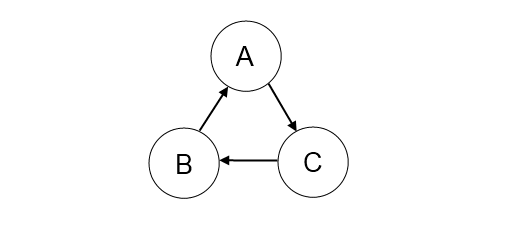依賴注入 (Dependency Injection, DI) 是 Spring 實現控制反轉概念的重要手段。Spring 提供了數種 DI patterns,其中最方便、最常用的是 field injection,它應該是許多人第一次寫 Spring 專案時所使用的 pattern,雖然這方式簡單易用,卻有不少缺點。
例如你會發現, IntelliJ IDEA 會很貼心地告訴我們:
Field Injection is not recommended.
Spring Team recommends: "Always use constructor based dependency injection in tour beans. Always use assertions for mandatory dependencies".

為何 constructor injection 優於 field injection 呢?接下來我會解析這兩種 pattern. (雖然 Spring 還有其他種注入方式,但我比較不常用,所以就不在此介紹了)
這種注入方式顧名思義,就是直接在 field 加上 @Autowired
@Component
public class HelloBean {
@Autowired private AnotherBean anotherBean;
@Autowired private AnotherBean2 anotherBean2;
// ...
@RunWith(MockitoJUnitRunner.class)
public class HelloBeanTest {
@Mock
private AnotherBean anotherBean;
@Mock
private AnotherBean2 anotherBean2;
...
@Mock
private AnotherBean10 anotherBean10;
@InjectMocks
private HelloBean helloBean;
@Before
public void setup() {
...
}
// Test cases...
}
這是相當常見的 Mockito+Junit 單元測試寫法,但容易造成疑問:
@RunWith(MockitoJUnitRunner.class) 是什麼意思 ?@InjectMocks 做了什麼 ?HelloBean 實體化呢 ?AnotherBean 類型的依賴怎麼辦 ?只有短短幾行就讓人產生諸多疑問,因此理解成本較高。雖然這種注入方式很簡單方便,但寫單元測試時就得還債了。若使用 constructor injection 則不易產生此問題,我們接著看下去:
此方式最大的特點是: Bean 的建立與依賴的注入是同時發生的
@Component
public class HelloBean {
private final AnotherBean anotherBean;
private final AnotherBean2 anotherBean2;
// ...
@Autowired
public HelloBean(AnotherBean anotherBean, AnotherBean2 anotherBean2, ...) {
this.anotherBean = anotherBean;
this.anotherBean2 = anotherBean2;
// ...
}
// ...
}
假設我們需要注入十幾個 dependecies,對比 field injection 的方式,這種方式暴露了 constructor 中含有過多的參數 (Long Parameter List),這是個很好的臭味偵測器,正常的開發者看到這麼多參數肯定是會頭痛的,這就表示我們需要想辦法重構它,盡可能使它符合單一職責原則 (Single Responsibility Principle)。
一看到 constructor 就可以讓開發者釐清這個物件所需要的 dependency,且缺一不可,進而縮小該物件在專案中的使用範圍,事物的範圍越窄,就越容易理解與維護。另外,我們也可以透過 constructor 注入假的依賴,進而容易寫單元測試。
一個簡單的範例:
public class HelloBeanTest {
private HelloBean helloBean;
@Before
public void setup() {
AnotherBean anotherBean = mock(AnotherBean.class);
AnotherBean2 anotherBean2 = mock(AnotherBean2.class);
// ...
helloBean = new HelloBean(anotherBean, anotherBean2, ...);
}
// Test cases...
}
相較前面的例子,這種注入方式不需要太多 @Annotation,讓測試程式碼看起來更乾淨了,我們也能輕鬆的用 new 來實體化待測物件、注入假依賴,整體而言看起來更 清楚、好理解,就算是不熟 Java 或 Mockito 的開發人員應該也能看得懂七八成,對於新人也比較好上手,而且也比較不會有誤用 @Annotation 所產生額外成本,優秀的單元測試就應該如此。
意思是 Bean 在被創造之後,它的內部 state, field 就無法被改變了。不可變意味著唯讀,因而具備執行緒安全 (Thread-safety) 的特性。此外,相較於可變物件,不可變物件在一些場合下也較合理、易於了解,而且提供較高的安全性,是個良好的設計。因此,透過 constructor injection,再把依賴宣都告成 final,就可以輕鬆建立 Immutable Object。
只有在使用 constructor injection 時才會造成此問題。
舉個簡單的例子,若依賴關係圖: Bean C → Bean B → Bean A → Bean C ,則會造成造成此問題,程式在 Runtime 會拋出BeanCurrentlyInCreationException,更白話來說,這就是雞生蛋 / 蛋生雞的問題,而 Spring 容器初始化時無法解決這樣的窘境,因此拋出例外並中斷程式。

但是,Circular dependency 其實算是一種 Anti-Pattern,所以如果能夠即時發現它,提早讓開發人員意識到該問題重新設計此 bean,我個人認為這點反而蠻好的。
本文介紹了兩種依賴注入模式,它們各有好壞,也都能達到同樣的目的,而比較常見的是 field injection,但不幸的這種方式較可能會寫出 code smell。另外,Spring 官方團隊建議開發者使用 constructor injection,雖然可能會有循環依賴異常,但無論在開發、測試方面,總體而言都是利大於弊,我也一直遵循這個模式。
本文轉錄自 https://kaisheng714.github.io/articles/analyzing-dependency-injection-patterns-in-spring
